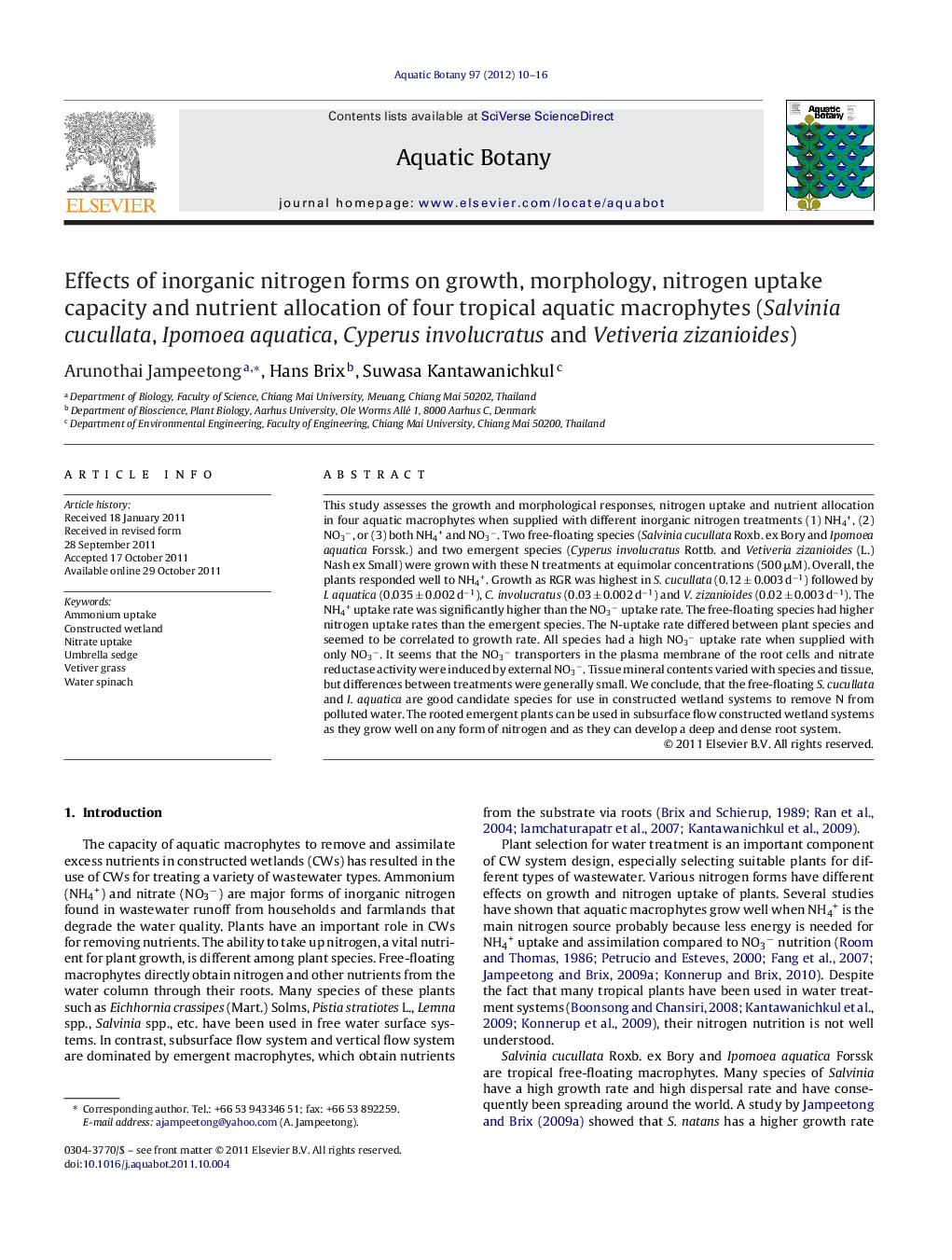| کد مقاله | کد نشریه | سال انتشار | مقاله انگلیسی | نسخه تمام متن |
|---|---|---|---|---|
| 4528056 | 1324280 | 2012 | 7 صفحه PDF | دانلود رایگان |

This study assesses the growth and morphological responses, nitrogen uptake and nutrient allocation in four aquatic macrophytes when supplied with different inorganic nitrogen treatments (1) NH4+, (2) NO3−, or (3) both NH4+ and NO3−. Two free-floating species (Salvinia cucullata Roxb. ex Bory and Ipomoea aquatica Forssk.) and two emergent species (Cyperus involucratus Rottb. and Vetiveria zizanioides (L.) Nash ex Small) were grown with these N treatments at equimolar concentrations (500 μM). Overall, the plants responded well to NH4+. Growth as RGR was highest in S. cucullata (0.12 ± 0.003 d−1) followed by I. aquatica (0.035 ± 0.002 d−1), C. involucratus (0.03 ± 0.002 d−1) and V. zizanioides (0.02 ± 0.003 d−1). The NH4+ uptake rate was significantly higher than the NO3− uptake rate. The free-floating species had higher nitrogen uptake rates than the emergent species. The N-uptake rate differed between plant species and seemed to be correlated to growth rate. All species had a high NO3− uptake rate when supplied with only NO3−. It seems that the NO3− transporters in the plasma membrane of the root cells and nitrate reductase activity were induced by external NO3−. Tissue mineral contents varied with species and tissue, but differences between treatments were generally small. We conclude, that the free-floating S. cucullata and I. aquatica are good candidate species for use in constructed wetland systems to remove N from polluted water. The rooted emergent plants can be used in subsurface flow constructed wetland systems as they grow well on any form of nitrogen and as they can develop a deep and dense root system.
► Growth and morphological responses of four tropical aquatic macrophytes to different forms of inorganic nitrogen.
► Effects of N form on nitrogen uptake and nutrient allocation.
► Information will be useful for plant selecting in tropical constructed wetlands.
Journal: Aquatic Botany - Volume 97, Issue 1, February 2012, Pages 10–16